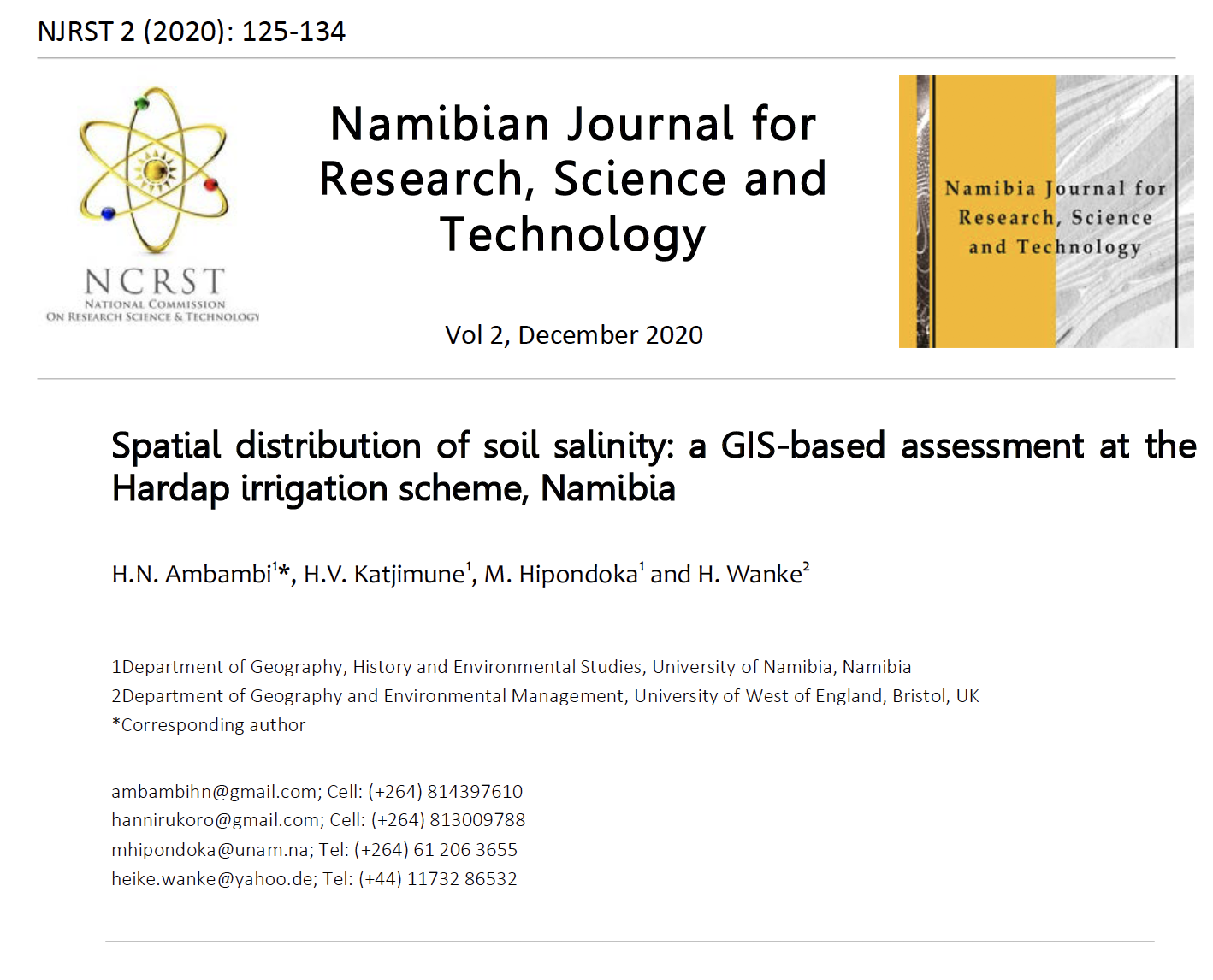Spatial distribution of soil salinity: a GIS-based assessment at the Hardap irrigation scheme, Namibia
Main Article Content
Abstract
Salinization is a worldwide problem that affects the physical and chemical properties of soils. It is the most common and widely recognized form of land degradation, particularly in arid and semi-arid regions, where evaporation surpasses precipitation. Namibia aims to grow the agricultural sector for food independence, economic growth and stability. As a result, it is of great importance to manage and protect crop farms from salinization in the country. This study assessed the spatial distribution of soil salinity at the Hardap Irrigation Scheme, one of the two largest and oldest schemes situated in a hot desert climate in Namibia. The grab sampling method was used to collect 59 surface soil samples from randomly selected sites in the study area. The sampling sites included both irrigated and non-irrigated areas. Samples were subsequently analysed in the laboratory for electrical conductivity (EC), using saturated paste EC1:5 method. Resultant measurements were then grouped into five salinity classes. The point data were interpolated using the Inverse Distance Weighted (IDW) method in ArcGIS. Salinity levels in the study area ranged between 0.004 and 1.97 dS/m ± 0.557 dS/m. Although high salinity levels were recorded, non- and slightly saline classes cover just over two-thirds of the study area. Soil salinity in the study area is thus generally low, but the hazard exists. The low salinity level in the study area may be due to hydropedological factors, the prevailing management system or both. Regular monitoring of soil salinity is recommended, especially when new management system is introduced.
Article Details

This work is licensed under a Creative Commons Attribution 4.0 International License.

